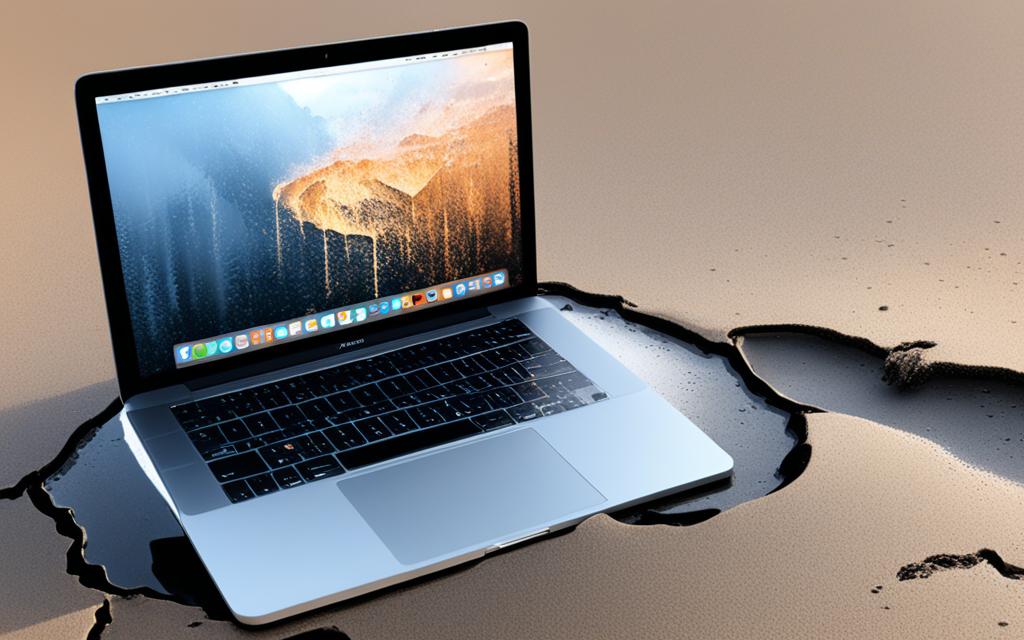MacBook Pro Safari Browser Crashing Solutions
When using Safari on your MacBook Pro, you may encounter issues such as the browser locking up or crashing. These problems can be caused by various factors, including software plugins, extensions, corrupt installation files, or poorly coded websites. Fortunately, there are several solutions to fix Safari crashing on your Mac.
If Safari keeps locking up on your Mac, it’s time to take action. Safari acts up can be inconvenient, but there are steps you can take to address the issue. Let’s explore some effective solutions to Safari keeps crashing on your Mac.
Crashes can disrupt your browsing experience, but don’t worry – there are ways to resolve the issue. In this article, we will guide you through the process of troubleshooting and fixing the Safari crashing problem on your MacBook Pro.
How to Stop Safari From Crashing
If you’re experiencing Safari crashing issues on your Mac, there are several steps you can take to address the problem. Follow these recommendations to ensure a smoother browsing experience:
-
Force Quit Safari: If Safari becomes unresponsive, you can force quit the application and then reopen it. This can help resolve temporary glitches or conflicts.
-
Restart Mac and Update macOS and Safari: Restarting your Mac can help refresh system processes and clear any background issues. Additionally, make sure both your macOS and Safari are up to date with the latest versions, as updates often include bug fixes and improvements.
-
Create a New User Profile: Sometimes, user-specific settings or preferences can cause Safari to crash. Creating a new user profile in Safari can help isolate the problem. Test Safari using the new profile to determine if the crashes persist.
-
Boot Mac into Safe Mode: Booting your Mac into Safe Mode allows it to start up with minimal system extensions and only essential processes. This helps identify if a third-party plugin or extension is causing the crashes.
-
Delete Safari Cache Files: Accumulated cache files in Safari can sometimes interfere with its functionality and cause crashes. Clearing the cache can resolve these issues. Follow the steps below to delete Safari cache files:
- Open Safari and go to the “Safari” menu at the top.
- Select “Preferences” from the dropdown menu.
- Switch to the “Advanced” tab.
- Check the box next to “Show Develop menu in menu bar.” This will enable the “Develop” menu.
- From the “Develop” menu, select “Empty Caches.”
By following these steps, you can address the Safari crashing issues on your Mac and enjoy a smoother browsing experience. If the problem persists, continue to the next section for further troubleshooting options.
Troubleshooting Safari Crashing
If the previous steps didn’t resolve the Safari crashing problem, there are several more troubleshooting options worth trying. Deleting all website data from Safari, disabling extensions, resetting PRAM or NVRAM, running Disk Utility, and using Apple Diagnostics to check for hardware issues can help identify and fix any underlying causes of Safari crashes on your MacBook Pro.
Delete All Website Data
When Safari crashes persist, deleting all website data can help eliminate any corrupt or problematic files that may be causing the crashes. To do this, go to Safari Preferences, select the “Privacy” tab, and click on “Manage Website Data.” Then, choose “Remove All” to clear the website data from your browser.
Disable Safari Extensions
Safari extensions can sometimes conflict with the browser and contribute to crashes. Temporarily disabling these extensions can help identify whether they are the cause of the problem. To disable extensions, go to Safari Preferences, click on the “Extensions” tab, and uncheck the box next to each extension to disable them.
Reset PRAM or NVRAM
Resetting the PRAM (Parameter Random Access Memory) or NVRAM (Non-Volatile Random Access Memory) can reset certain hardware settings that might be related to Safari crashes. To reset PRAM or NVRAM, restart your MacBook Pro and immediately hold down the Command + Option + P + R keys until you hear the startup sound for the second time.
Run Disk Utility
Running Disk Utility can help identify and repair any disk errors that may be contributing to Safari crashes. Launch Disk Utility from the Applications/Utilities folder, select your startup disk, and click on “First Aid” to run the disk repair process.
Use Apple Diagnostics to Check for Hardware Issues
If the previous troubleshooting steps haven’t resolved the Safari crashing problem, it’s worth using Apple Diagnostics to check for any hardware issues that may be affecting your MacBook Pro. Restart your Mac and hold down the D key during startup to launch Apple Diagnostics. Follow the on-screen instructions to complete the diagnostics process and identify any potential hardware problems.
| Troubleshooting Steps | Description |
|---|---|
| Delete All Website Data | Clears all website data to eliminate potential corrupt files |
| Disable Safari Extensions | Temporarily disables extensions to check for conflicts |
| Reset PRAM or NVRAM | Resets certain hardware settings that may be related to crashes |
| Run Disk Utility | Scans and repairs disk errors that may contribute to crashes |
| Use Apple Diagnostics | Checks for hardware issues that may affect Safari’s stability |
By following these troubleshooting steps, you can effectively address Safari crashing issues on your MacBook Pro and enjoy a more stable browsing experience.
Additional Tips and Fixes
If Safari on your MacBook Pro continues to crash despite trying the previous solutions, there are a few more tips and fixes you can try to address the issue. These steps can further troubleshoot and resolve any persistent Safari crashing problems you may be experiencing.
Clear Safari Caches
Clearing the Safari caches can help eliminate any corrupted or outdated data that may be causing the browser to crash. To clear the caches, follow these steps:
- In Safari, go to the “Safari” menu.
- Click on “Preferences.”
- Go to the “Privacy” tab.
- Click on “Manage Website Data.”
- Select “Remove All” to clear all the caches.
Delete Safari History and Website Data
Deleting the browser history and website data can also help resolve Safari crashing issues. To delete the history and data, follow these steps:
- In Safari, go to the “History” menu.
- Click on “Clear History…”
- Select the appropriate time range and click “Clear History.”
- Go to the “Privacy” tab in Preferences.
- Click on “Manage Website Data.”
- Select the websites you want to remove and click “Remove” or select “Remove All” to clear all the data.
Restart Mac
Restarting your Mac can help refresh the system and resolve any temporary issues causing Safari crashes. To restart your Mac, follow these steps:
- Click on the Apple menu in the top-left corner of your screen.
- Select “Restart…” from the drop-down menu.
- Confirm the restart by clicking on “Restart” in the popup window.
Delete Safari Preference Files
Deleting the Safari preference files can reset the browser settings and resolve any configuration conflicts causing Safari crashes. To delete the preference files, follow these steps:
- In Finder, click on “Go” in the menu bar.
- Hold the “Option” key and click on “Library.”
- Open the “Safari” folder.
- Delete the following files: “com.apple.safari.plist” and “com.apple.safari.plist.lockfile”.
- Empty the Trash to permanently delete the files.
Clear RAM
Clearing the RAM (Random Access Memory) can help free up resources and resolve any memory-related issues causing Safari crashes. To clear the RAM on your Mac, follow these steps:
- Make sure all open applications and files are saved.
- Press and hold the “Option,” “Command,” and “Escape” keys simultaneously.
- A window will appear showing the open applications.
- Select “Safari” and click on “Force Quit.”
- Restart Safari and check if the crashing issue persists.
Update macOS and Safari
Keeping your macOS and Safari up to date is crucial for optimal performance and stability. Make sure you have the latest updates installed by following these steps:
- Click on the Apple menu in the top-left corner of your screen.
- Select “System Preferences…” from the drop-down menu.
- Click on “Software Update.”
- Follow the instructions to install any available updates for macOS and Safari.
By following these additional tips and fixes, you can effectively troubleshoot and address any persistent Safari crashing issues on your MacBook Pro. Remember to regularly clear the Safari caches, delete the history and website data, restart your Mac, delete preference files, clear RAM, and keep your macOS and Safari updated for optimal performance.
Conclusion
In conclusion, experiencing Safari crashing on your MacBook Pro can be frustrating, but there are reliable fixes and troubleshooting solutions available. By following the recommendations mentioned in this article, you can effectively troubleshoot and resolve the Safari crashing issue on your Mac. Implementing these solutions will help you enjoy a smoother browsing experience and ensure optimal performance and security.
Remember to regularly update your macOS and Safari to stay up-to-date with the latest improvements and bug fixes. Keeping your software updated is essential for maintaining the stability and compatibility of your Safari browser. Additionally, practicing good browsing habits, such as regularly clearing the Safari caches and deleting history and website data, can contribute to preventing potential crashes in the future.
With the troubleshooting steps and reliable fixes outlined in this article, you can address Safari crashing on your MacBook Pro effectively and efficiently. Don’t let browser crashes hinder your browsing experience. Apply these solutions and enjoy uninterrupted browsing on your Mac.
FAQ
How do I force quit Safari on my MacBook Pro?
To force quit Safari, press Command + Option + Escape on your keyboard, then select Safari from the list of applications and click “Force Quit”.
How do I restart my Mac?
To restart your Mac, click on the Apple menu in the top left corner of your screen, select “Restart”, and then click “Restart” again in the confirmation window.
How do I check for macOS and Safari updates?
To check for updates, click on the Apple menu, select “System Preferences”, and then click on “Software Update”. If updates are available for macOS or Safari, click “Update Now” to install them.
How do I create a new user profile in Safari?
To create a new user profile, open Safari and go to “Safari” in the menu bar. Select “Preferences” and go to the “Profiles” tab. Click on the “+” button to add a new profile, then follow the prompts to set it up.
How do I boot my Mac into Safe Mode?
To boot your Mac into Safe Mode, shut down your computer and then turn it back on. Immediately press and hold the Shift key until you see the Apple logo. Release the Shift key and let your Mac boot up.
How do I delete Safari cache files?
To delete Safari cache files, open Safari and go to “Safari” in the menu bar. Select “Preferences” and go to the “Privacy” tab. Click on “Manage Website Data” and then click “Remove All”. Confirm your action by clicking “Remove Now”.
How do I delete all website data from Safari?
To delete all website data from Safari, open Safari and go to “Safari” in the menu bar. Select “Preferences” and go to the “Privacy” tab. Click on “Manage Website Data” and then click “Remove All”. Confirm your action by clicking “Remove Now”.
How do I disable Safari extensions?
To disable Safari extensions, open Safari and go to “Safari” in the menu bar. Select “Preferences” and go to the “Extensions” tab. Uncheck the box next to each extension you want to disable.
How do I reset PRAM or NVRAM on my Mac?
To reset PRAM or NVRAM, shut down your Mac and then turn it back on. Immediately press and hold the Option + Command + P + R keys together. Keep holding the keys until your Mac restarts and you hear the startup chime for the second time.
How do I run Disk Utility on my Mac?
To run Disk Utility, open “Finder” and go to “Applications”. Open the “Utilities” folder and double-click on “Disk Utility”. Select your hard drive from the sidebar and click on the “First Aid” tab. Click “Run” to start the disk repair process.
How do I use Apple Diagnostics to check for hardware issues?
To use Apple Diagnostics, shut down your Mac and then turn it back on. Immediately press and hold the D key until the Apple Diagnostics screen appears. Follow the on-screen instructions to run the diagnostics tests.
How do I clear the Safari caches on my Mac?
To clear the Safari caches, open Safari and go to “Safari” in the menu bar. Select “Preferences” and go to the “Advanced” tab. Check the box next to “Show Develop menu in menu bar”. Go to the “Develop” menu and select “Empty Caches”.
How do I delete Safari history and website data on my Mac?
To delete Safari history and website data, open Safari and go to “History” in the menu bar. Select “Clear History” and choose the time range you want to clear. Click “Clear History” to confirm.
How do I delete Safari preference files on my Mac?
To delete Safari preference files, open “Finder” and go to the “Go” menu. Press and hold the Option key to reveal the “Library” option. Select “Library” and then navigate to the “Preferences” folder. Look for files starting with “com.apple.safari” and drag them to the trash.
How do I clear RAM on my Mac?
To clear RAM on your Mac, press and hold the Shift + Control + Option + Power keys at the same time. Release the keys and wait for your Mac to restart.
How do I ensure that I have the latest macOS and Safari updates installed?
To ensure you have the latest macOS and Safari updates installed, click on the Apple menu, select “System Preferences”, and then click on “Software Update”. If updates are available for macOS or Safari, click “Update Now” to install them.











